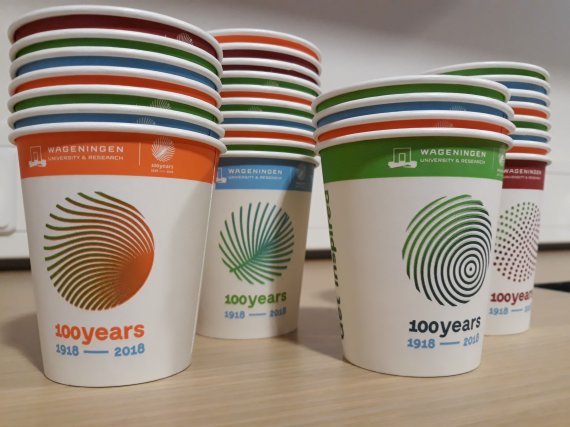© Linda van der Nat
In what is called a ‘life cycle assessment’, researchers at Wageningen Food and Biobased Research and at TNO compared three processing routes available to the disposable cups. The study was performed on behalf of the purchasers of hot beverage cups for the Dutch Government. ‘The government uses the same type of hot beverage cups as WUR – the ones with a PLA coating – and wanted to know the best way to process them’, explains Christiaan Bolck of Wageningen Food and Biobased Research.
Environment
Up until last year, these disposable cups were incinerated in a waste-to-energy plant. But new possibilities have arisen since, such as recycling the cups into toilet paper and tissues, or fermenting them to produce biogas. In the latter case, the remnants are then converted to compost. The researchers subjected these three processing methods to an environmental analysis. This was then compared to current processes for which these processing steps are an alternative, such as making paper pulp from trees. For their calculations, the researchers used a method in which environmental effects are expressed in damage costs in euros. Bolck: ‘Our researchers investigated the total effect on the environment, such as land use, particulates, pesticides and CO2 emissions. In that area, recycling the cups scored best. This is partly because 89 percent of the cups is suitable for reuse.’ Fermenting the cups ended in second place but was still a better option than incineration.
It would appear that a good climate policy is not always compatible with a circular economy, in which the focus lies on recycling.
Christiaan Bolck, Wageningen Food and Biobased Research
Climate
If one looks exclusively at the effects on climate change, the conclusion of the researchers changes drastically. To calculate this, the researchers compared the various processing steps to their current alternatives once again, but this time they only focused on the avoided CO2 emissions. In that setting, fermentation and incineration both scored higher than recycling. This is because fermentation and incineration of the cups can act as alternatives for the consumption of natural gas, a process that causes significant CO2 emissions. When recycling, CO2 emissions are also avoided, but not nearly as much, as the production of fresh paper pulp from trees has a very limited CO2 production in the first place. Bolck: ‘It would appear that a good climate policy is not always compatible with a circular economy, in which the focus lies on recycling.’
No general solution
Based on the results, the Ministry of Economic Affairs and Climate Policy, which financed the study, has chosen to recycle the cups. According to Block, the chosen model does have an influence on the results. ‘For this kind of analyses, you are forced to compare apples and oranges; so you need to find a specific model to express everything in the same unit. A different model could lead to different results. The final choice mainly depends on what you want to achieve. In this case, there was no option that satisfied all aspects.’
Further reading:
‘Not so easy to recycle all plastic’
The plastic cup has a new rival
Goodbye to plastic cups

